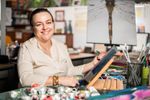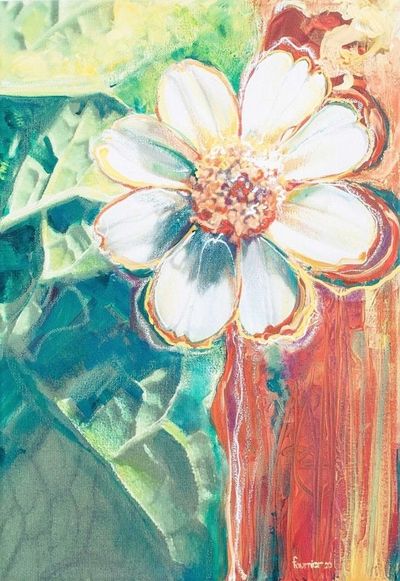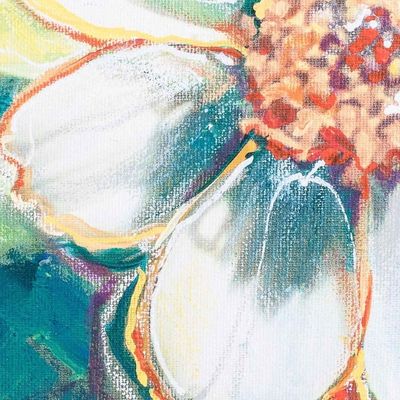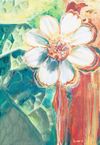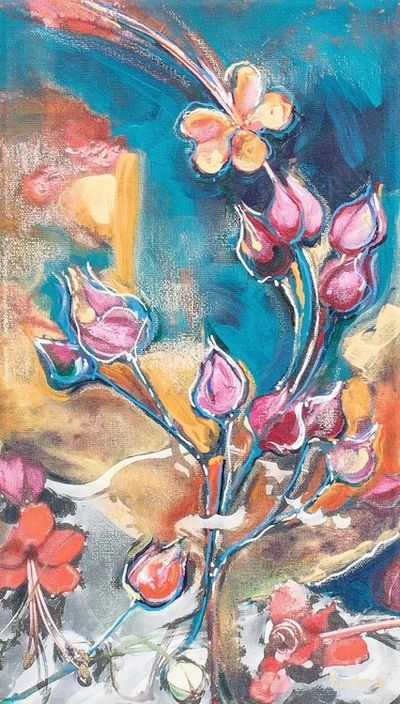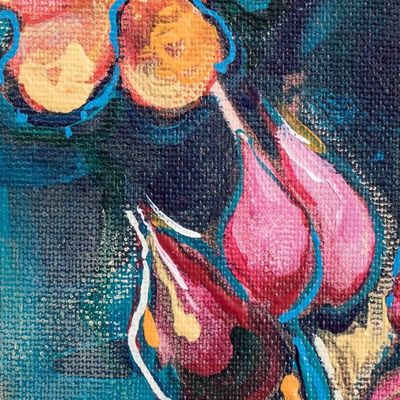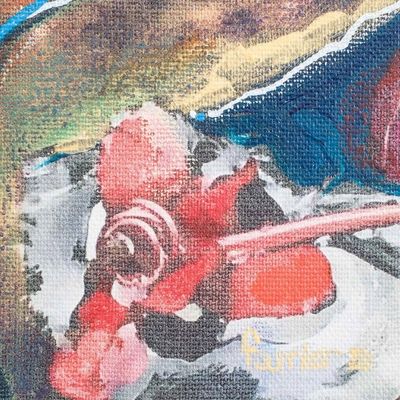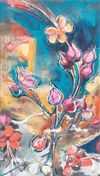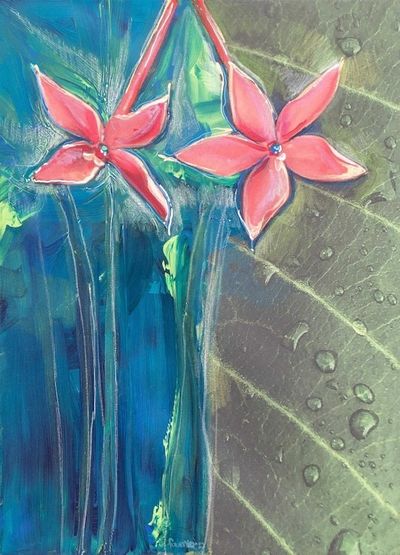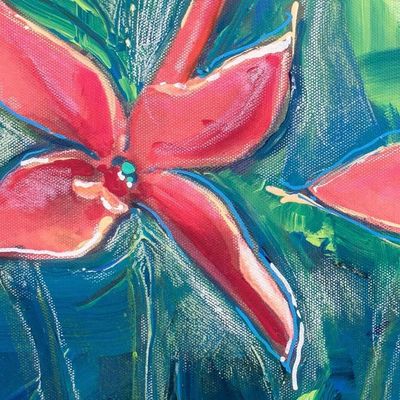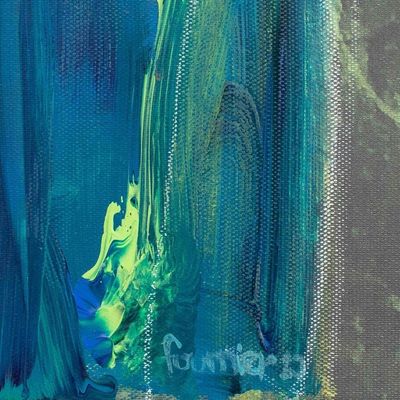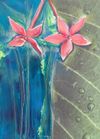Facilitated by
Central America Fulfillment Hub

Sylvia Fournier original mixed media paintings and photography
“My name is Sylvia Fournier Herrera. I was born on in 1968 in San José, Costa Rica. My father was an eminent Costa Rican ecologist and conservationist who had a lot of influence on my worldview. He instilled in me from childhood the love and appreciation for nature and the importance of conserving and defending it. My mother is a biologist by profession, and she is also artistically inclined. My childhood was spent in part in the city of San José and on a family coffee farm located in Ciudad Colón, where I currently reside with my family. Under the influence of my parents I learned a lot about plants, animals and the environment in general. Because of their scientific training, they taught me to observe the richness and vitality of our tropical nature.
“Since childhood I had a great inclination for the arts under the influence of my mother and my grandmother who was a painter and craftswoman. So when I entered university, I was faced with a dilemma--I couldn't decide whether to dedicate myself to the science that I was passionate about or to the art that was my other passion. I finally decided to study arts and graduated. After a few years I studied architecture. I made my first paintings next to my grandmother and they were oil paintings. After working for many years in photography, I worked for 10 years at a newspaper and also in architecture. I decided to unite my passions: art, photography and nature.
“In the last two years I have dedicated myself to taking photographs of the exuberant tropical flora and fauna of my country. My work is not focused on the landscapes of beaches or mountains that abound in the country, nor on the recognized fauna of Costa Rica, such as toucans, sloths, etc., but rather is focused on nature observed closely, in a way more intimate. I take pictures of small multi-colored insects with intricate designs and small wild flowers that grow alone in the bush, many of which last only a few hours and that nobody sees. To take the photographs, I take advantage of the intense natural light that varies in tone, warmth and intensity throughout the day. All photographs are taken in natural light and have no filters or retouching. The most challenging part of the process is taking the photographs, as it is an exciting but arduous job. In order for a "perfect" photograph to come out, a large quantity must be taken, with different angles, compositions and lighting. And when working with living beings, you must be patient and spend a lot of time until all the elements come together to capture an unrepeatable moment in an image.
“I think that in Costa Rica there is a tradition of appreciating and conserving nature, since this is undoubtedly one of the riches of our country. In Costa Rica, more or less 25% of the territory is a protected area. There are 27 national parks, 58 wildlife refuges, 32 protected areas, 15 areas of swampy wetlands, 11 forest reserves and 8 biological reserves, as well as 12 other conservation regions. People who live in other parts of the world, especially in northern areas, cannot imagine the richness, the color, the vitality and the biodiversity that exists in places like my country. So what I would love is that through my work they can bring that color, freshness and tropical exuberance to their lives.
“Dedicating yourself to working in art or crafts is always difficult. And people who are artistically inclined are generally not good at things like finance, marketing or public relations, much less sales. This is my case. My dream for the future is to be able to dedicate myself fully to photography and art, always linked to nature. And, with my work, to be able to create awareness in people of the beauty and fragility of nature and the importance of protecting it. People who live in big cities in apartment buildings or who work long hours in an office can have a little color, light and freshness if they have a picture of tropical nature!”

Sylvia Fournier
“My inexhaustible source of inspiration is nature. I fully identify with a poem by William Blake that says: ‘To see a World in a Grain of Sand/And a Heaven in a Wild Flower/Hold Infinity in the palm of your hand/And Eternity in an hour’.
“My name is Sylvia Fournier Herrera. I was born on in 1968 in San José, Costa Rica. My father was an eminent Costa Rican ecologist and conservationist who had a lot of influence on my worldview. He instilled in me from childhood the love and appreciation for nature and the importance of conserving and defending it. My mother is a biologist by profession, and she is also artistically inclined. My childhood was spent in part in the city of San José and on a family coffee farm located in Ciudad Colón, where I currently reside with my family. Under the influence of my parents I learned a lot about plants, animals and the environment in general. Because of their scientific training, they taught me to observe the richness and vitality of our tropical nature.
“Since childhood I had a great inclination for the arts under the influence of my mother and my grandmother who was a painter and craftswoman. So when I entered university, I was faced with a dilemma--I couldnt decide whether to dedicate myself to the science that I was passionate about or to the art that was my other passion. I finally decided to study arts and graduated. After a few years I studied architecture. I made my first paintings next to my grandmother and they were oil paintings. After working for many years in photography, I worked for 10 years at a newspaper and also in architecture. I decided to unite my passions: art, photography and nature.
“In the last two years I have dedicated myself to taking photographs of the exuberant tropical flora and fauna of my country. My work is not focused on the landscapes of beaches or mountains that abound in the country, nor on the recognized fauna of Costa Rica, such as toucans, sloths, etc., but rather is focused on nature observed closely, in a way more intimate. I take pictures of small multi-colored insects with intricate designs and small wild flowers that grow alone in the bush, many of which last only a few hours and that nobody sees. To take the photographs, I take advantage of the intense natural light that varies in tone, warmth and intensity throughout the day. All photographs are taken in natural light and have no filters or retouching. The most challenging part of the process is taking the photographs, as it is an exciting but arduous job. In order for a "perfect" photograph to come out, a large quantity must be taken, with different angles, compositions and lighting. And when working with living beings, you must be patient and spend a lot of time until all the elements come together to capture an unrepeatable moment in an image.
“I think that in Costa Rica there is a tradition of appreciating and conserving nature, since this is undoubtedly one of the riches of our country. In Costa Rica, more or less 25% of the territory is a protected area. There are 27 national parks, 58 wildlife refuges, 32 protected areas, 15 areas of swampy wetlands, 11 forest reserves and 8 biological reserves, as well as 12 other conservation regions. People who live in other parts of the world, especially in northern areas, cannot imagine the richness, the color, the vitality and the biodiversity that exists in places like my country. So what I would love is that through my work they can bring that color, freshness and tropical exuberance to their lives.
“Dedicating yourself to working in art or crafts is always difficult. And people who are artistically inclined are generally not good at things like finance, marketing or public relations, much less sales. This is my case. My dream for the future is to be able to dedicate myself fully to photography and art, always linked to nature. And, with my work, to be able to create awareness in people of the beauty and fragility of nature and the importance of protecting it. People who live in big cities in apartment buildings or who work long hours in an office can have a little color, light and freshness if they have a picture of tropical nature!”
